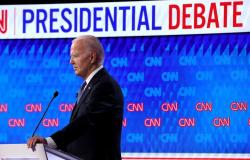For three years, natural gas has been talked about a lot: for its prices reaching stratospheric levels in August 2022, as a fundamental parameter in electricity prices, as a geopolitical protagonist since the outbreak of the Russian-Ukrainian conflict. Its major impact on energy prices has played a key role in the galloping inflation observed over the last two years and, consequently, on the purchasing power of the French. It has also become an electoral propaganda tool, especially since the next increase (more than 10%) will take place on Monday 1er July, the day after the first round of legislative elections.
In most programs, energy, in general, and gas, in particular, are used as demagogic tools: price blocking for the far left, reduction of VAT to 5.5% for the nationalist right would be the miracle antidotes to “restore purchasing power to the French”. What is it really ? Why has gas increased sharply? Does the State have significant room for maneuver to lower the price of gas?
How does the price of gas break down for individuals?
Gas suppliers obtain their supplies from the wholesale market located in Rotterdam. Between 2018 and mid-2021, the MWh was worth €16.50 on average. From September 2021, prices increased sharply, exceeding €100/MWh in December 2021 then, following the Russian-Ukrainian conflict, reached a historic peak at €250/MWh in August 2022. From the beginning of 2023 , the TTF [Title Transfer Facility est le point virtuel d’échange commercial de gaz dans la zone de marché des Pays-Bas, NDLR] fell back below €50/MWh, to stabilize today around €35/MWh. Let us therefore remember that the wholesale price of gas is today double what it was before the crisis of 2021 and 2022. France has no leverage over the wholesale prices inexorably suffered by the consumer.
Apart from the wholesale price, the gas bill (retail price) has three other components: the cost of transportation to the point of consumption, commercial costs and various taxes.
Since the start of 2018, the average price of the regulated gas tariff has increased by 37%. Except for the crisis period (mid-2021 to mid-2023) during which a price shield kept retail prices well below wholesale prices, the retail price minus wholesale price differential has remained almost constant. In other words, the increase in the price of gas for the consumer results almost exclusively from the doubling of the wholesale price.
On the other hand, the increase in gas prices on July 1, 2024 is essentially due to an increase in transport costs justified by the drop in gas consumption (from 312 TWh, in 2020, to 268 TWh, in 2023) and the number of consumers (-1.5%/year) while, at the same time, the fixed costs of operating the network remaining stable (infrastructure unchanged), or even increasing, taking into account the connection of the new methanizers to transport the green gas. The Energy Regulatory Commission has therefore decided to increase transport costs by 23% on 1er July 2024. This increase will automatically increase the price of the average gas MWh by 11%.
Lower or block gas prices: what levers for the State?
If commercial costs partly contribute to suppliers’ margins, they also include energy saving certificates (EEC) intended to subsidize insulation work or changes to heating equipment in homes.
At the same time, we must mention, among the taxes, the TICGN (domestic tax on the consumption of natural gas) partly intended to finance energy checks, to subsidize biomethane but also, and above all, the carbon tax. The government took advantage of the drop in wholesale prices to shamelessly double, but also without advertising, the TICGN on 1er January 2024 (from €8.4/MWh to €16.4/MWh).
As EECs and investments in green gas are intended to accelerate the energy transition (they account for 20% of the bill!), no political party legitimately wishes to touch them. On the contrary, the TICGN currently subsidizing biogas to the tune of €700 million/year is set to increase significantly.
The only possible lever therefore remains the reduction of VAT to 5.5%. Already applied to the fixed part of the invoice, it currently remains at the rate of 20% on the variable part. This strategy chosen by the National Rally would have a cost of 3.2 billion euros per year for the State. It would mechanically reduce the price of the MWh by €10 and the annual bill of an average gas consumer by €120. Not enough to significantly increase the purchasing power of the average French person.
As for the price freeze envisaged by the New Popular Front, it could only lead to an immediate shortage, with no distributor agreeing to supply gas at a loss. The most deprived, already today in great energy poverty, would, as usual, be the first victims.
(article written with the collaboration of François Henimann, former EDF-GDF executive and independent consultant)
Print, save or send this article






